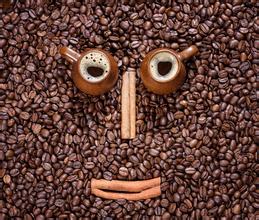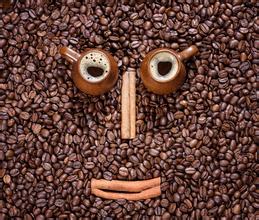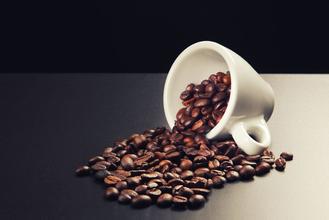The American Hawaiian Kona Coffee with the sweetness of caramel introduces the Manoa Valley of Oahu.
Kona coffee is truly a rare gem of the world and is not easy to find. Real Hawaiian Kona coffee has a caramel-like sweetness that gives you a unique pleasure and leads you slowly into the transcendent state of coffee tasting. Hawaii's coffee industry is among the most tightly regulated of all coffee producers, with the highest labor costs and the best investment levels.
Hawaii's coffee industry has to compete for space with expanding tourism. Most coffee is grown on the slopes of Mauna Loa. Mauna Loa was originally a volcano located in the western part of the Kona region of Hawaii. The length of the coffee producing area is about 30 kilometers, and its cultivation area is mainly concentrated in the north and south of the area. Coffee trees are grown in relatively inhospitable areas, but the soil is fertile and contains volcanic ash. Despite the physical effort required to start planting and the difficulties involved in managing it, it is reassuring to note that coffee trees in Kona (at least those growing above 90 metres) appear to be immune to any pests and diseases.
Real kona coffee is a real gem and not easy to find. The best Kona coffees are divided into three categories: ExtraFancy, Fancy and NumberOne. This third-class coffee is produced both on the estate and under natural conditions. Most coffees on the market that call themselves Kona contain less than 5% real Hawaiian Kona coffee. Another good Hawaiian coffee can be found in the United States-Kai Farms.
Planting pattern editing
Hawaii tourism is developed, visitors can visit coffee farms, see or hands-on coffee harvest, coffee beans processing, roasting and grinding and other processes, and make a cup of coffee that really belongs to themselves. There are about 600 independent coffee farms in the Kona area, most of which are small family farms, usually between 18 and 42 acres. Kona coffee can bring in more than $10 million a year to these coffee farms.
Kona coffee has always been grown using the family farming model. At first, only men were allowed to work in the coffee garden, but later women joined in. Hawaiian family production was more dependent on family effort than on hiring workers, so it was normal for Hawaiian families to have eight or nine children. Since then, new immigrants from the Philippines, the United States and Europe have come to Hawaii to engage in coffee farming. Over time, Hawaii has formed a social atmosphere centered on family culture and easy to absorb foreign culture, which has become a major feature of Hawaii.
Each island has several unique places for tourists and locals to taste and buy coffee, ranging from cozy shops to comprehensive coffee knowledge centers. In Hawaii, you can watch the blazing sunset sink into the red-orange sea, feel the fresh, flowery air, and sit on the beach with a cup of coffee. I'm afraid there's no place in the world that can offer you such enjoyment

Important Notice :
前街咖啡 FrontStreet Coffee has moved to new addredd:
FrontStreet Coffee Address: 315,Donghua East Road,GuangZhou
Tel:020 38364473
- Prev

Tanzanian coffee processed by washing Introduction Fine coffee beans
Tanzanian coffee is often washed, and coffee farmers will send the coffee fruit to the nearest processing plant for processing after picking. The washing method comprises the following steps: firstly, screening and removing impurities doped in coffee fruits; then removing coffee pulp and pericarp; sending the coffee fruits into a fermentation tank; removing pectin layer adhered to the pericarp through fermentation; and cleaning.
- Next

Organic Coffee, a Peruvian coffee producer in western South America, introduces the production areas of Peruvian coffee.
Peruvian coffee is grown in a planned way, which has greatly increased coffee production. Its rich acidity and mellow smoothness are its most prominent features. Peruvian coffee has a soft sour taste, medium texture, good taste and aroma, and is an indispensable ingredient in the production of comprehensive coffee. High-quality Peruvian coffee with a strong aroma, smooth, layered and full-bodied
Related
- Does Rose Summer choose Blue, Green or Red? Detailed explanation of Rose Summer Coffee plots and Classification in Panamanian Jade Manor
- What is the difference between the origin, producing area, processing plant, cooperative and manor of coffee beans?
- How fine does the espresso powder fit? how to grind the espresso?
- Sca coffee roasting degree color card coffee roasting degree 8 roasting color values what do you mean?
- The practice of lattes: how to make lattes at home
- Introduction to Indonesian Fine Coffee beans-- Java Coffee producing area of Indonesian Arabica Coffee
- How much will the flavor of light and medium roasted rose summer be expressed? What baking level is rose summer suitable for?
- Introduction to the characteristics of washing, sun-drying or wet-planing coffee commonly used in Mantenin, Indonesia
- Price characteristics of Arabica Coffee Bean Starbucks introduction to Manning Coffee Bean Taste producing area Variety Manor
- What is the authentic Yega flavor? What are the flavor characteristics of the really excellent Yejasuffi coffee beans?

